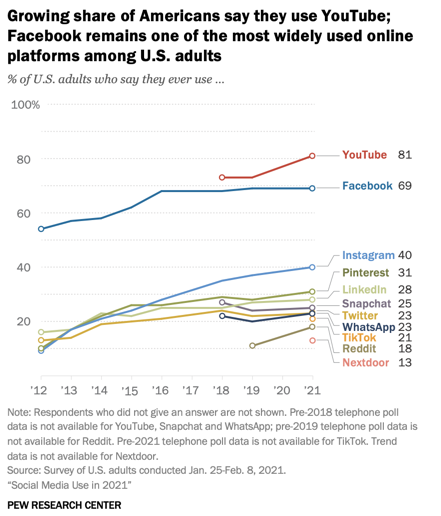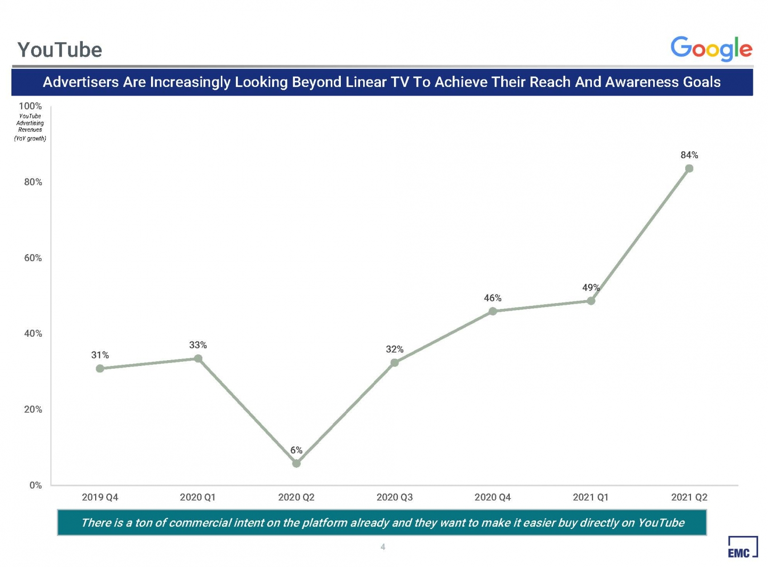YouTube advertising revenue (YoY growth):
1) 2019-Q2 – $3.6B
2) 2020-Q2 – $3.8B (↑ 6%)
3) 2021-Q2 – $7.0B (↑ 84%)
Big question #1: What drove YoY growth in revenue for YouTube?
Quick answer: A rapidly increasing CTV user base and higher CPMs (↑ 108% YoY).
YouTube users in the U.S. on CTV (% change):
1) Mar-20 – 100M
2) Dec-20 – 120M (↑ 20%)
Share of YouTube ads on CTV according to The Information:
1) 2019 – 12%
2) 2020 – 40%
Share of U.S. adults who use YouTube according to Pew:
1) 2018 – 73%
2) 2021 – 81%

Big question #2: What items limit YouTube’s ability to cut into the $70B TV ad market?
Missing items from YouTube ad offering according to AdAge:
1) Measurement (beyond YouTube)
2) Frequency management (beyond YouTube)
3) Targeting (beyond YouTube data)
Quote from anonymous media buying executive:
“We know that the marketplace for TV is challenging, at best. And in order to really transfer dollars over from linear cable to something like YouTube, you need to understand, ‘Am I getting the same efficiency? Am I getting the same value? Am I getting the same audience?’”
YouTube’s share of U.S. video ad market according to eMarketer / Cross Screen Media:
1) 2019 – 4%
2) 2020 – 4%
3) 2021P – 5%
4) 2022P – 6%
5) 2023P – 6%






